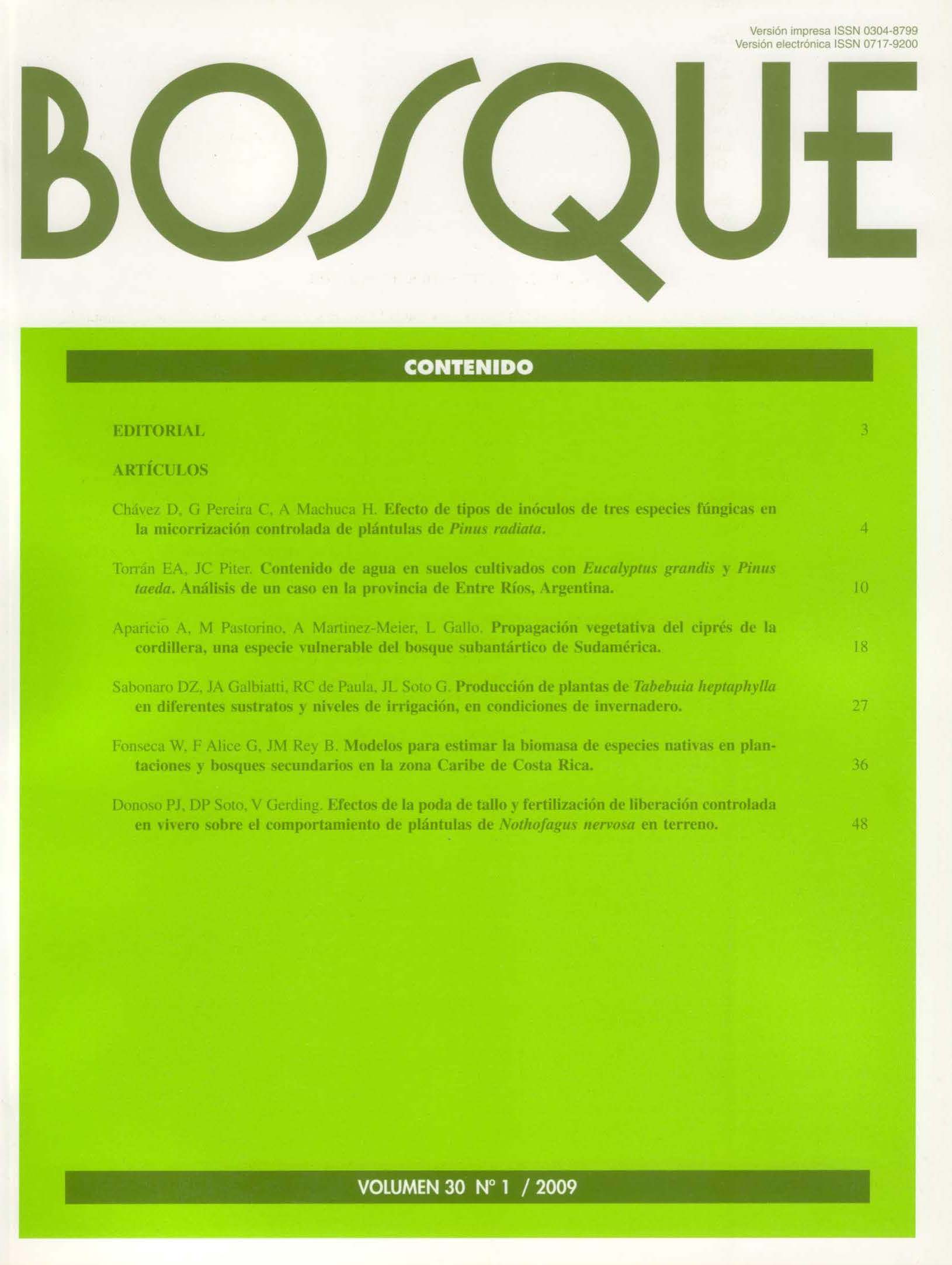Vegetative propagation of patagonian cypress, a vulnerable species from the subantarctic forest of South America
Conteúdo do artigo principal
Resumo
Increasing risks of loosing forest genetic resources and the need for a sustainable quality wood supply make focusing research efforts on undomesticated tree species necessary. The study of their genetic variation in vegetative propagation ability and the development of practical methodologies to obtain genetic copies are essential tools for conservation and breeding programs. patagonian cypress Austrocedrus chilensis is a vulnerable conifer native to the subantarctic forest of South America, with high ecological importance and economical potential. Its genetic diversity, mostly sheltered within unprotected populations, is seriously threatened. This work examined the ability of different genotypes of A. chilensis from xeric, mesic and humid populations to propagate asexually by stem rooting and scion grafting. The influence of exogenous auxins, season of cutting collection, ontogenetic stage of the donor plants, grafting season, and type of scions, was analyzed. Stem rooting ability was found to be poor both for adult (average = 0.27%) and juvenile ortets (average = 2.10%). Only one treatment, a juvenile progeny from a xeric provenance, showed remarkable results with 33.33% of rooting capacity. Grafting showed good results in early spring experiment using vigorous semi-hardwood scions, with an average of 80.95% of successful grafts. Compatibility between genotypes from different provenances used as scion and rootstock was found to be wide. These results indicate that although A. chilensis is a difficult-to-root species, its vegetative propagation by means of scion grafting is feasible using low cost technology.

